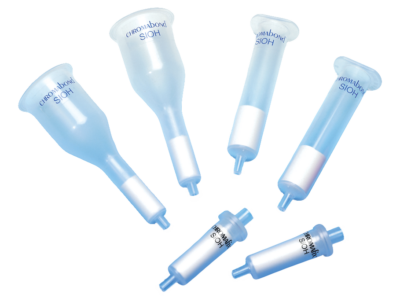
What is SPE?
Solid Phase Extraction (SPE) is a sample preparation method used in chromatography. It helps isolate and concentrate specific compounds from complex mixtures. The process works by letting analytes stick to a solid stationary phase, then washing them off with a solvent for analysis.
What are SPE Cartridges?
SPE cartridges make this process simple. These small devices are made of plastic or glass and filled with a solid stationary phase. The phase is what decides which compounds stay in the cartridge and which flow through.
Choosing the Right Stationary Phase
Different stationary phases are available, each with unique benefits.
-
Silica gel works well for polar compounds.
-
Alumina suits many organic compounds.
-
Cellulose is often used for biological samples.
Your choice depends on the type of analyte and the sample matrix.
How SPE Works with Chromatography
In many workflows, SPE cartridges pair with liquid chromatography. The mobile phase flows through the cartridge, trapping target compounds while washing away impurities. This results in cleaner samples and more accurate analysis.
Benefits of SPE Cartridges
-
Versatile – Works with organic, inorganic, and biological compounds.
-
Easy to use – Can also be automated for busy labs.
-
Reliable – Improves accuracy by removing impurities.
-
Efficient – Cuts down solvent use and saves time.
Challenges of SPE Cartridges
-
Cost – High-quality cartridges can be expensive.
-
Time – Low-flow systems may run slower.
-
Scaling – Not always ideal for large-volume samples.
-
Strong binding – Some compounds stick too tightly and are hard to recover.
Final Thoughts
SPE cartridges give scientists a fast, effective way to clean and concentrate samples before analysis. They improve efficiency, accuracy, and reliability in the lab. Still, it’s important to weigh costs and sample needs before choosing SPE as your method.

About the Author – Randy Cooper, MBA PCM
Randy Cooper brings more than 35 years of experience in marketing technology. He earned his Bachelor of Science in Information Technology with a concentration in web development from the University of Phoenix and later completed his MBA in Digital Marketing at Liberty University. In addition, he holds the Professional Certified Marketer (PCM) credential from the American Marketing Association.
In 2009, Randy launched Buzz My Biz, a technology consulting agency dedicated to delivering enterprise-level solutions to small and mid-sized businesses. Since then, he has helped organizations grow by combining digital strategy, marketing expertise, and technical innovation.
When he steps away from the keyboard, Randy enjoys cheering on the Atlanta Braves, spending time outdoors hiking, and working in his yard.


